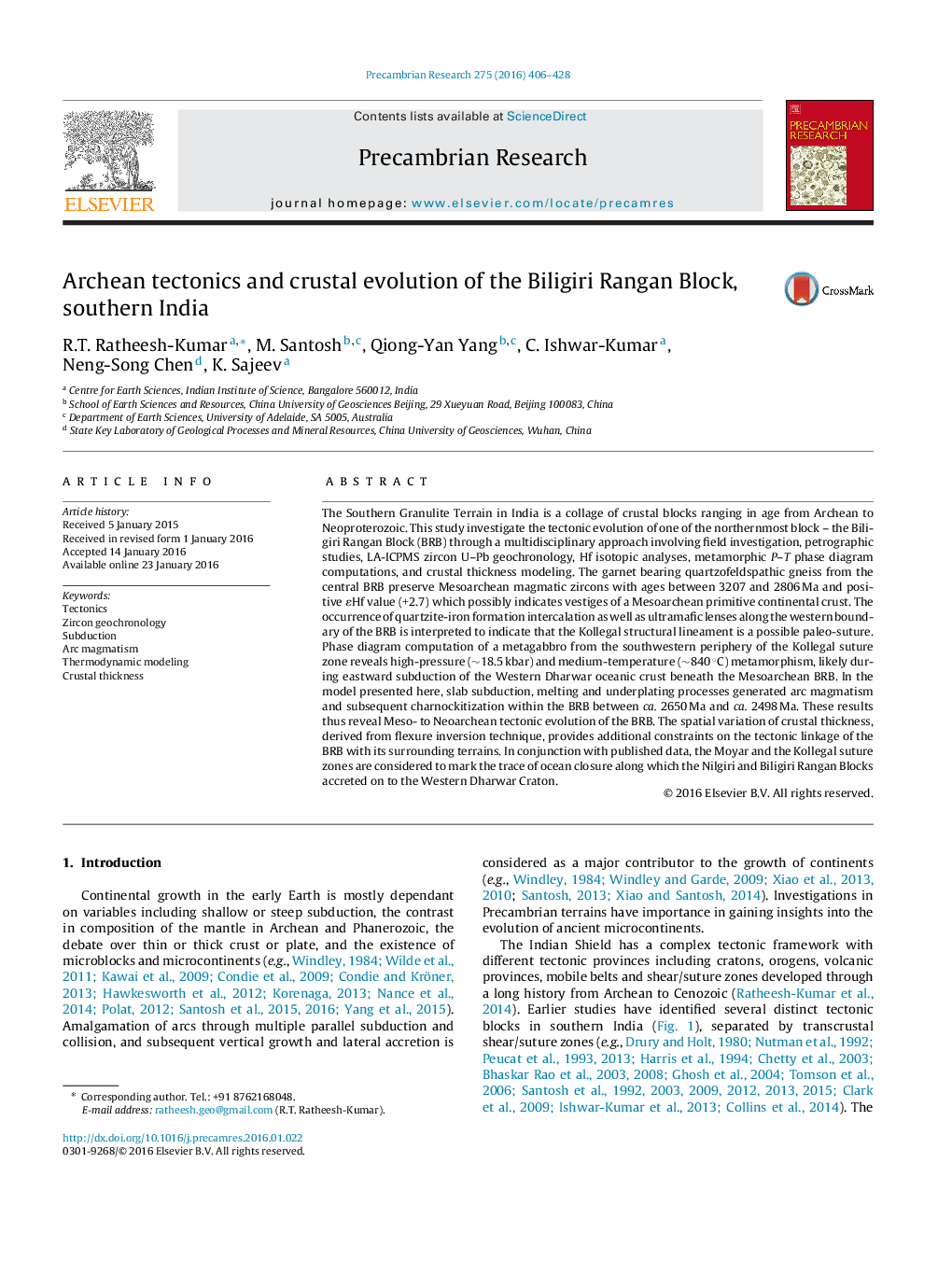| کد مقاله | کد نشریه | سال انتشار | مقاله انگلیسی | نسخه تمام متن |
|---|---|---|---|---|
| 4722383 | 1639600 | 2016 | 23 صفحه PDF | دانلود رایگان |

• Definition and evolution of Biligiri Rangan tectonic block in southern India.
• Integrated geological and geophysical analytical proxies have been employed.
• High-pressure metamorphic evolution of the western margin-Kollegal suture zone.
• Mesoarchean origin and Neoarchean arc magmatism of the Biligiri Rangan Block.
• Subduction of Dharwar crust and accretion of Biligiri Rangan and Nilgiri Blocks.
The Southern Granulite Terrain in India is a collage of crustal blocks ranging in age from Archean to Neoproterozoic. This study investigate the tectonic evolution of one of the northernmost block – the Biligiri Rangan Block (BRB) through a multidisciplinary approach involving field investigation, petrographic studies, LA-ICPMS zircon U–Pb geochronology, Hf isotopic analyses, metamorphic P–T phase diagram computations, and crustal thickness modeling. The garnet bearing quartzofeldspathic gneiss from the central BRB preserve Mesoarchean magmatic zircons with ages between 3207 and 2806 Ma and positive ɛHf value (+2.7) which possibly indicates vestiges of a Mesoarchean primitive continental crust. The occurrence of quartzite-iron formation intercalation as well as ultramafic lenses along the western boundary of the BRB is interpreted to indicate that the Kollegal structural lineament is a possible paleo-suture. Phase diagram computation of a metagabbro from the southwestern periphery of the Kollegal suture zone reveals high-pressure (∼18.5 kbar) and medium-temperature (∼840 °C) metamorphism, likely during eastward subduction of the Western Dharwar oceanic crust beneath the Mesoarchean BRB. In the model presented here, slab subduction, melting and underplating processes generated arc magmatism and subsequent charnockitization within the BRB between ca. 2650 Ma and ca. 2498 Ma. These results thus reveal Meso- to Neoarchean tectonic evolution of the BRB. The spatial variation of crustal thickness, derived from flexure inversion technique, provides additional constraints on the tectonic linkage of the BRB with its surrounding terrains. In conjunction with published data, the Moyar and the Kollegal suture zones are considered to mark the trace of ocean closure along which the Nilgiri and Biligiri Rangan Blocks accreted on to the Western Dharwar Craton.
Figure optionsDownload as PowerPoint slide
Journal: Precambrian Research - Volume 275, April 2016, Pages 406–428